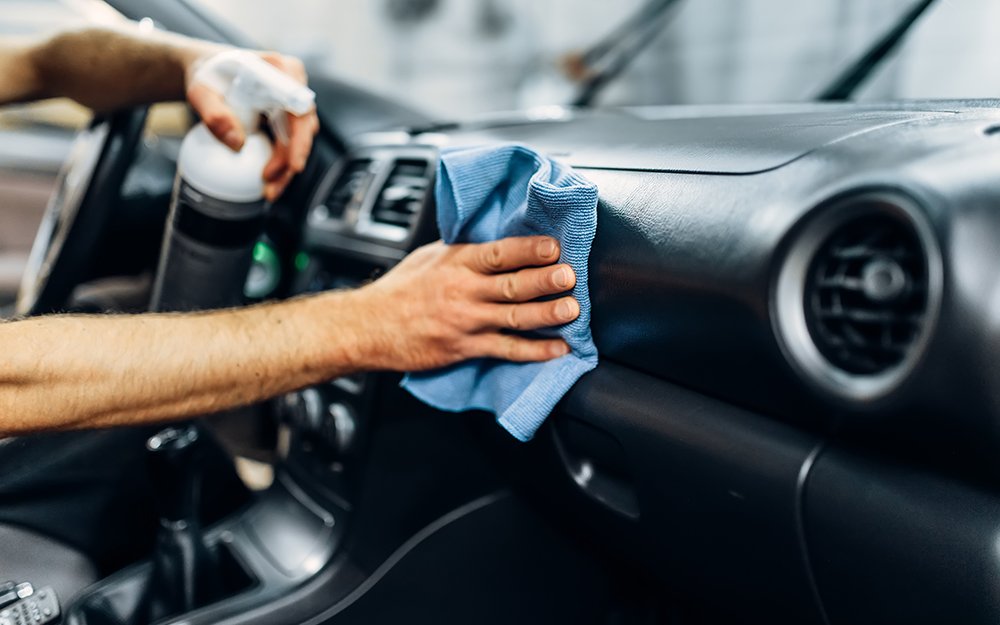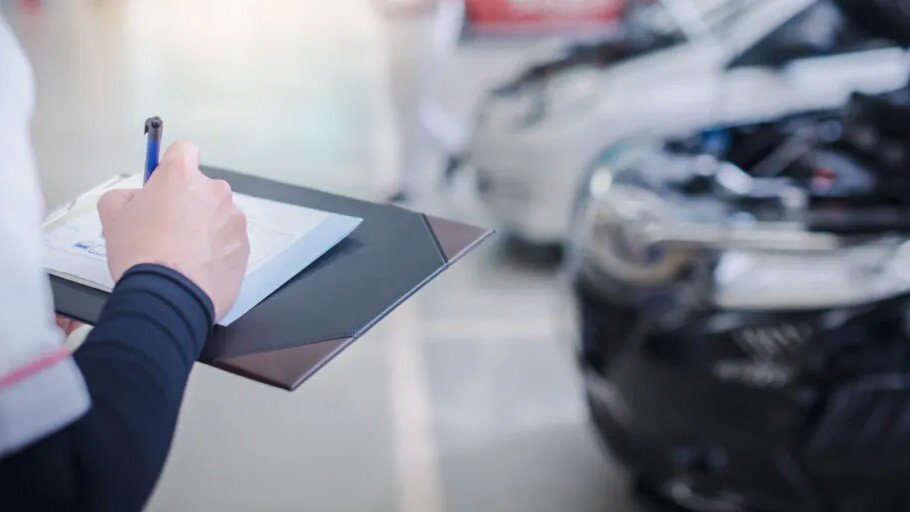Vehicle detailing is a thorough cleaning and restoration process designed to maintain and enhance the appearance of your car. Unlike a standard car wash, which focuses on basic cleaning, detailing involves meticulous work to clean, polish, and protect every part of your vehicle. Detailing not only improves your car’s look but also extends its lifespan by protecting surfaces from damage. Regular detailing can prevent wear and tear and maintain the resale value of your car. It is essential for car enthusiasts who want their vehicles to look brand new, but it’s also beneficial for anyone who values a clean and well-maintained car. Understanding the different aspects of detailing helps ensure that every part of your vehicle receives the care it needs.
Types of Vehicle Detailing
Exterior Detailing
Washing and Drying
Exterior detailing starts with a thorough wash. Use a high-quality car shampoo and a microfiber mitt to gently scrub away dirt and grime. Avoid using household detergents as they can strip protective coatings. After washing, rinse the vehicle thoroughly with clean water to remove soap residue. Drying is crucial to prevent water spots; use a soft, clean microfiber towel or a drying aid to gently pat the surface dry. Proper washing and drying techniques are fundamental in preparing your vehicle for further detailing steps.
Clay Bar Treatment
Once the vehicle is clean, a clay bar treatment can remove contaminants embedded in the paint that washing alone can’t tackle. Gently glide the clay bar over the surface using a lubricant to ensure smooth movement. This process helps to eliminate stubborn particles like tree sap and industrial fallout. The result is a smoother surface that will enhance the effectiveness of polishing and waxing.
Polishing and Waxing
Polishing removes minor scratches and swirl marks, restoring the paint’s clarity. Apply a polishing compound using a dual-action polisher or by hand with a microfiber applicator. After polishing, waxing adds a protective layer that enhances the shine and guards against environmental damage. Choose a high-quality car wax and apply it in a thin, even layer, allowing it to cure before buffing it off. This step provides a glossy finish and protects the paint from UV rays and contaminants.
Interior Detailing
Vacuuming and Shampooing
Interior detailing begins with thorough vacuuming to remove dirt, dust, and debris from carpets, seats, and crevices. Use a vacuum with various attachments to reach all areas, including under seats and between cushions. For a deeper clean, shampoo the carpets and upholstery. Use a carpet cleaner designed for automotive use and follow the manufacturer’s instructions. This step revitalizes the interior by removing stains and odors.
Leather and Fabric Care
For leather seats, use a specialized leather cleaner to gently remove dirt and grime. After cleaning, apply a leather conditioner to keep the material supple and prevent cracking. For fabric upholstery, use an appropriate cleaner and a soft brush to lift dirt from the fibers. Regular conditioning and cleaning help maintain the quality and appearance of both leather and fabric interiors.
Dashboard and Console Cleaning
Cleaning the dashboard and console requires a careful approach to avoid damaging electronic components. Use a mild cleaner and a microfiber cloth to wipe down these surfaces. Pay attention to areas around buttons and vents where dust accumulates. For a finishing touch, use a detailing spray to add shine and protection. This helps to keep your dashboard looking fresh and new.
Essential Tools and Products for Detailing
Cleaning Products
High-quality cleaning products are essential for effective detailing. Choose car-specific shampoos, waxes, and cleaners that are designed to work safely on automotive surfaces. Avoid using household cleaners as they can be too harsh and may damage your car’s finish. Products such as clay bars, microfiber towels, and detailing sprays should be part of your detailing toolkit to achieve professional results.
Detailing Tools
Investing in the right tools can make the detailing process more efficient and effective. Essential tools include a dual-action polisher for polishing and waxing, a vacuum with various attachments for thorough interior cleaning, and a set of brushes for delicate areas. Microfiber towels and applicators are also crucial for applying products and wiping down surfaces without leaving scratches.
Protective Gear
Protective gear is important to ensure your safety while detailing. Wear gloves to protect your hands from chemicals and a mask to avoid inhaling dust and fumes. Safety glasses are also recommended to shield your eyes from splashes and debris. Using protective gear ensures that you can detail your vehicle safely and comfortably.
Step-by-Step Guide to Exterior Detailing
Preparing the Vehicle
Before starting the exterior detailing process, prepare your vehicle by parking it in a shaded area to prevent soap from drying too quickly and leaving spots. Ensure that the car is cool to the touch, as hot surfaces can make washing and polishing more difficult. Gather all necessary supplies and tools to avoid interruptions during the process.
Washing Techniques
Begin washing your vehicle using a two-bucket method: one bucket for soapy water and another for rinsing your mitt. This technique helps to prevent dirt from scratching the paint. Wash the car from top to bottom to avoid dragging dirt over clean areas. Use a gentle, circular motion and rinse the mitt frequently to ensure a thorough and safe clean.
Applying Clay Bar
After washing and drying, use a clay bar to remove contaminants from the paint. Spray a lubricant on the surface and glide the clay bar gently across the paint. This step helps to smooth the surface and prepare it for polishing. Ensure that the clay bar remains lubricated to avoid scratching the paint.
Polishing and Waxing
Apply a polishing compound to remove minor imperfections and enhance the paint’s clarity. Use a dual-action polisher for best results, or apply by hand if preferred. Once polished, apply a layer of wax to protect the paint and enhance the shine. Follow the manufacturer’s instructions for both polishing and waxing to achieve a professional finish.
Step-by-Step Guide to Interior Detailing
Cleaning and Vacuuming
Start by vacuuming the interior thoroughly to remove loose dirt and debris. Use a vacuum with attachments to reach tight spots and under seats. After vacuuming, clean the carpets and upholstery using a suitable shampoo. For best results, use a carpet extractor or steam cleaner to deep clean and remove stains.
Treating Leather and Upholstery
For leather seats, use a leather cleaner to remove surface dirt and a conditioner to keep the leather soft and prevent damage. For fabric seats, use an upholstery cleaner and a brush to agitate and lift dirt. Make sure to follow the product instructions to avoid over-saturating and damaging the materials.
Detailing the Dashboard and Console
Wipe down the dashboard and console with a microfiber cloth and a gentle cleaner. Be careful around electronic components and buttons. Use a detailing brush to clean vents and small crevices. Apply a protectant to keep the surfaces looking fresh and prevent dust buildup.
Common Mistakes to Avoid in Vehicle Detailing
Using Incorrect Products
Using the wrong products can lead to damage or ineffective cleaning. Avoid household cleaners and use products specifically designed for automotive use. Ensure that the products you use are compatible with your vehicle’s surfaces to avoid adverse reactions.
Skipping Essential Steps
Skipping steps in the detailing process can lead to unsatisfactory results. Ensure that you follow each step carefully, from washing and claying to polishing and waxing. Each step plays a crucial role in achieving a professional finish and maintaining your vehicle’s appearance.
Rushing the Process
Detailing requires time and patience. Rushing through the process can lead to missed spots and less effective results. Take your time to ensure each step is completed thoroughly. Quality detailing is about attention to detail, so don’t hurry through the process.
Maintaining Your Vehicle’s Shine
Regular Cleaning Routines
To keep your vehicle looking its best, establish a regular cleaning routine. Wash your car frequently to remove dirt and contaminants before they cause damage. Regular vacuuming and interior cleaning will help maintain a fresh appearance and prevent buildup.
Protecting the Finish
Protecting your vehicle’s finish involves regular waxing and using paint protection products. Apply a layer of wax every few months to shield the paint from UV rays, water spots, and contaminants. Consider using a paint sealant for long-lasting protection.
Tips for Long-Term Care
For long-term care, store your vehicle in a garage or use a car cover to protect it from environmental elements. Regular detailing and maintenance will keep your car in excellent condition and preserve its value over time. Follow manufacturer recommendations for care and use high-quality products to ensure the best results.
Conclusion
Vehicle detailing is a comprehensive process that involves both exterior and interior care. By following a detailed routine, using the right products and tools, and avoiding common mistakes, you can keep your vehicle looking its best. Regular detailing not only enhances the appearance of your car but also helps protect and preserve it, ensuring that it remains in top condition for years to come.



